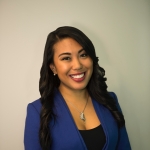
Ms. Pam Korza
Inside Artist-Municipal Partnerships
Posted by Dec 03, 2018

Ms. Pam Korza
Whether it is a City’s commitment to redress systemic racial inequities, a juvenile court system shifting from penalizing youth to a restorative justice approach, or a local arts agency advancing the power of art as civic change agent, more municipalities are engaging artists to bring new capacities and strategies to government agencies and, in doing so, increasing their effectiveness in achieving civic goals. More artists, too, are moved to contribute their creative assets to the public good by gaining access to and working as partners with municipal agencies and systems. This week, Animating Democracy’s blog salon, Inside Artist-Municipal Partnerships, explores the question: What does it take to make partnerships between municipal agencies and artists work? Leading-edge local arts agency leaders and arts practitioners who are serving as instigators, facilitators, intermediaries, and advancers of these partnerships share principles and practices they’ve tested and lessons they’ve learned that can help guide peer agencies and peer artists toward effective partnerships.
Read More

































